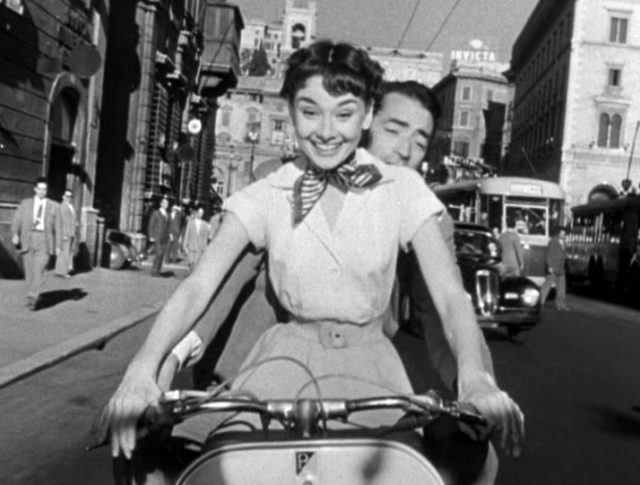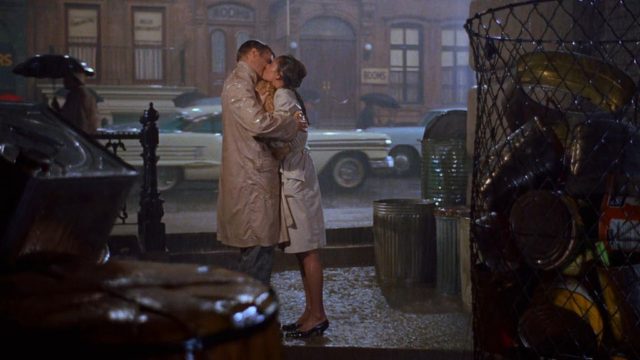At ten years old, Audrey was sent by her father to live with her mother, a Dutch baroness, because the Netherlands was expected to stay neutral when the Second World War started in 1939. But the next year, the Germans invaded, and Audrey was terrified of being captured and sent to live in a military brothel like so many other girls were at that time. Her mother sent her to take ballet lessons in their hometown of Arnhem. After learning to dance, the girls gave secret dance performances to help raise money for the resistance. The performances were held in homes behind closed curtains, while the Nazis patrolled the area. To avoid unwanted attention, the spectators never clapped. After the performances, the dancers then took money and messages that were stuffed in their shoes to the resistance contacts, all the while risking their lives.

The Allies’ Operation Market Garden was supposed to liberate the region but it ended in disaster, leaving Audrey and the rest of Holland starving to death by the winter of 1944. The Germans had stopped all imports of food in retaliation for the resistance attacks. Later in life, Audrey recalled how she managed to survive, unlike 20,000 other Dutch citizens. But by the end of the war, Audrey weighed just over 84 pounds even though she was 5’10.
By the 1950s, Audrey made her way to Hollywood. Even though her slim figure and pixie cut were at odds with the cinematic beauty standards of the time, she took the town by storm. She could never figure out why people thought she was beautiful.
22 years after her death at the age of 63, an exhibit displaying rare and unseen photos of Audrey Hepburn might be able to explain why one of the most alluring stars of the silver screen in the 20th century spent so much time improving the condition of orphans and refugees.
In one photo, an extremely thin British girl poses in a secret dance show under the noses of the Nazi occupiers. The photos also distinguish her incredible bravery in helping Dutch resistance fighters in WWII.
Just under ten years later, this brave would-be dancer, Audrey Hepburn, would be standing next to Gregory Peck and winning an Oscar for the hit movie Roman Holiday. She went on to become one of Tinsel Town’s most iconic actresses in a string of hit classics that included Breakfast at Tiffany’s and My Fair Lady.

Hepburn then turned her back on Hollywood and spent the last third of her life tirelessly working for UNICEF, going to many different war-torn and poverty stricken areas.
Later the movie icon, who enthralled millions, said: “The best audience I ever had made not a single sound at the end of my performance.”
Her eldest son from her first marriage, Sean Ferrer, 54, says: “That experience shaped her whole life. It made her appreciate the freedoms that most people take for granted. It made her oppose any form of extreme government. It also turned her against Germany. She wouldn’t have anything German in the house. On the other hand, she was grateful to the people who liberated her. She never forgot the chocolates and the outstretched hands – the little acts of kindness to children like herself. Later in life, those memories inspired her to work for UNICEF. She wanted to give something back to the world.”
Her son from her second marriage, Luca Dotti, 45, says: “She thought she had a big nose and big feet, and she was too skinny and not enough breast. She would look in the mirror and say, ‘I don’t understand why people see me as beautiful’.”

This new exhibition at London’s National Portrait Gallery shows Audrey was loved by the camera even back then. One of the unseen photos shows Audrey as a nine-year-old little girl and another shows her as she walks her dog at Richmond Park in 1950, just as she’s about to hit the big-time.
Luca, who has helped put together the “Portraits of an Icon” show, said his Mom wasn’t worried about her looks fading.
He said: “She was actually very happy about growing older because it meant more time for herself, more time for her family, and separation from the frenzy of youth and beauty that is Hollywood.”
Luca added: “She would be honored to have an exhibition dedicated to her at the National Portrait Gallery – and glad to be back home.”
